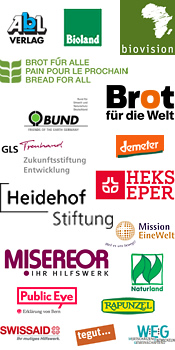Nachricht
16.12.2019 | permalink
Poorest countries suffer from double burden of malnutrition

Low and middle-income countries are increasingly facing the double burden of undernutrition and obesity due to rapid changes in countries’ food systems. According to a new four-paper report published in the medical journal “The Lancet” on December 16, more than a third of such countries had overlapping forms of malnutrition, especially in sub-Saharan Africa, south and east Asia and the Pacific. “We are facing a new nutrition reality,” said lead author Dr Francesco Branca from the World Health Organization (WHO). “We can no longer characterize countries as low-income and undernourished, or high-income and only concerned with obesity. All forms of malnutrition have a common denominator – food systems that fail to provide all people with healthy, safe, affordable, and sustainable diets.” He said that changing this would require action across food systems – from production and processing, through trade and distribution, pricing, marketing, and labelling, to consumption and waste. “All relevant policies and investments must be radically re-examined,” he added.
Worldwide, almost 2.3 billion children and adults are overweight, and more than 150 million children are stunted. However, in low- and middle-income countries, overnutrition (overweight and obesity) does increasingly coexist alongside undernutrition (stunting and wasting) at all levels of the population. The Lancet report looks at the trends and drivers behind this double burden. The authors used survey data from low- and middle-income countries in the 1990s and 2010s to estimate which countries faced a double burden of malnutrition. A severe double burden of malnutrition was defined as wasting in more than 15% and stunting in more than 30% of children aged 0 to 4 years, a body-mass index below 18.5 in more than 20% of women aged 15–49 years, and more than 20% of people being overweight. The researchers found that in 2010, more than a third of low and middle-income countries (48 out of 126 countries) had overlapping forms of malnutrition. In the 2010s, 14 countries with some of the lowest incomes in the world had newly developed a double burden of malnutrition, compared with the 1990s, whereas fewer low- and middle-income countries with the highest incomes were affected than in the past. This reflects a growing prevalence of overweight in the poorest countries, where populations still face stunting, wasting and thinness.
According to the authors, the poorest low- and middle-income countries are seeing a rapid transformation in the way people eat, drink, and move at work, home, in transport and in leisure. “The new nutrition reality is driven by changes to the food system, which have increased availability of ultra-processed foods that are linked to increased weight gain, while also adversely affecting infant and pre-schooler diets,” said report author Professor Barry Popkin from the University of North Carolina. “These changes include disappearing fresh food markets, increasing supermarkets, and the control of the food chain by supermarkets, and global food, catering and agriculture companies in many countries.” The authors highlight that a food system transformation is needed in order to end malnutrition in all its forms. The report identifies a set of ‘double-duty actions’ that simultaneously prevent or reduce the risk of nutritional deficiencies. These range from improved antenatal care and breastfeeding practices, to social welfare, and to new agricultural and food system policies with healthy diets as their primary goal. To create the systemic changes needed to end malnutrition, the authors call on governments, the UN, civil society, academics, the media, donors, the private sector and economic platforms to address the double burden of malnutrition. They recommend to bring in new actors, such as grass-roots organizations, farmers and their unions, faith-based leaders, advocates for planetary health, innovators as well as investors who are financing fair and green companies. “Without a profound food system transformation, the economic, social, and environmental costs of inaction will hinder the growth and development of individuals and societies for decades to come,” warns Dr Branca. (ab)

